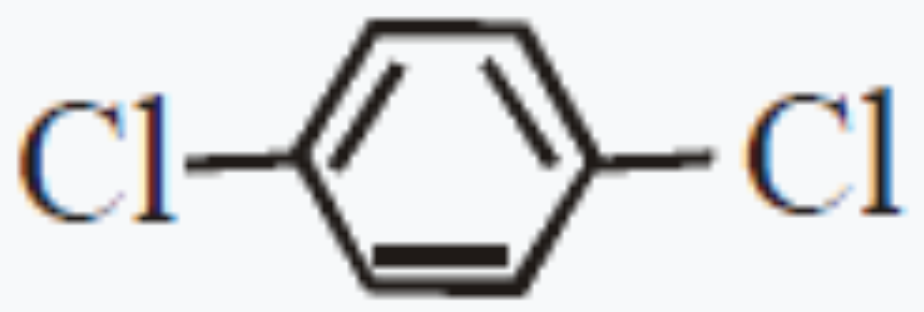Which of the following has almost zero dipole moment?
trans-dichloroethene
cis-but-2-ene
cis-dichloroethene
trans-but-2-ene
The correct Answer is:A, D
To determine which of the given compounds has almost zero dipole moment, we need to analyze the molecular structures and the electronegativity of the atoms involved. Let's evaluate each option step by step.
Step 1: Understanding Dipole Moment
The dipole moment arises due to the difference in electronegativity between atoms in a molecule. When two atoms with different electronegativities form a bond, the more electronegative atom pulls the electron density towards itself, creating a dipole. If the dipoles in a molecule cancel each other out due to symmetry, the molecule will have a net dipole moment of zero.
Step 2: Analyzing Option A - Trans-Dichloroethane
1. Structure: Trans-dichloroethane has the structure:
Cl−C=C−Cl
with the chlorine atoms on opposite sides of the double bond.
2. Electronegativity: Chlorine (Cl) is more electronegative than carbon (C). The dipole moments due to the Cl atoms will point towards the Cl atoms.
3. Dipole Moment Calculation: The dipole moments from the two Cl atoms are equal in magnitude but opposite in direction, thus they cancel each other out.
4. Conclusion: Therefore, trans-dichloroethane has a dipole moment of almost zero.
Step 3: Analyzing Option B - Cis-But-2-ene
1. Structure: Cis-but-2-ene has the structure:
C=CwithCH3 on one side and H on the other.
2. Electronegativity: The carbon atoms are bonded to different groups (CH3 and H), leading to an unequal distribution of electron density.
3. Dipole Moment Calculation: The dipole moments do not cancel out due to the asymmetrical arrangement of groups around the double bond.
4. Conclusion: Therefore, cis-but-2-ene does not have a dipole moment of zero.
Step 4: Analyzing Option C - Cis-Dichloroethane
1. Structure: Cis-dichloroethane has the structure:
Cl−C=C−Cl
with both Cl atoms on the same side of the double bond.
2. Electronegativity: Similar to trans-dichloroethane, Cl is more electronegative than C.
3. Dipole Moment Calculation: The dipole moments from the two Cl atoms add up rather than cancel out.
4. Conclusion: Therefore, cis-dichloroethane does not have a dipole moment of zero.
Step 5: Analyzing Option D - Trans-But-2-ene
1. Structure: Trans-but-2-ene has the structure:
C=CwithCH3 on one side and another CH3 on the opposite side.
2. Electronegativity: The molecule is symmetrical, with CH3 groups on opposite sides.
3. Dipole Moment Calculation: The dipole moments from the CH3 groups cancel each other out.
4. Conclusion: Therefore, trans-but-2-ene has a dipole moment of almost zero.
Final Conclusion
The compound with almost zero dipole moment is Trans-Dichloroethane (Option A) and Trans-But-2-ene (Option D).
The dipole moment arises due to the difference in electronegativity between atoms in a molecule. When two atoms with different electronegativities form a bond, the more electronegative atom pulls the electron density towards itself, creating a dipole. If the dipoles in a molecule cancel each other out due to symmetry, the molecule will have a net dipole moment of zero.
1. Structure: Trans-dichloroethane has the structure:
Cl−C=C−Cl
with the chlorine atoms on opposite sides of the double bond.
2. Electronegativity: Chlorine (Cl) is more electronegative than carbon (C). The dipole moments due to the Cl atoms will point towards the Cl atoms.
1. Structure: Cis-but-2-ene has the structure:
C=CwithCH3 on one side and H on the other.
2. Electronegativity: The carbon atoms are bonded to different groups (CH3 and H), leading to an unequal distribution of electron density.
1. Structure: Cis-dichloroethane has the structure:
Cl−C=C−Cl
with both Cl atoms on the same side of the double bond.
1. Structure: Trans-but-2-ene has the structure:
C=CwithCH3 on one side and another CH3 on the opposite side.
The compound with almost zero dipole moment is Trans-Dichloroethane (Option A) and Trans-But-2-ene (Option D).
Topper's Solved these Questions
- HYDROCARBONSBOOK - MODERN PUBLICATIONCHAPTER - HYDROCARBONSEXERCISE - COMPETITION FILE (OBJECTIVE TYPE QUESTIONS) (MULTIPLE CHOICE QUESTIONS based on the given passage/comprehension)
9 Videos
- HYDROCARBONSBOOK - MODERN PUBLICATIONCHAPTER - HYDROCARBONSEXERCISE - COMPETITION FILE (OBJECTIVE TYPE QUESTIONS) (Integer Type Questions)
4 Videos
- HYDROCARBONSBOOK - MODERN PUBLICATIONCHAPTER - HYDROCARBONSEXERCISE - COMPETITION FILE (OBJECTIVE TYPE QUESTIONS) (MULTIPLE CHOICE QUESTIONS from competitive examinations (JEE (Advance) for IIT Entrance))
4 Videos
- HALOALKANES AND HALOARENESBOOK - MODERN PUBLICATIONCHAPTER - HALOALKANES AND HALOARENESEXERCISE - UNIT PRACTICE TEST
12 Videos
- HYDROGENBOOK - MODERN PUBLICATIONCHAPTER - HYDROGENEXERCISE - UNIT PRACTICE TEST (for Board Examination)
9 Videos
Similar Questions
Knowledge Check
Which of the following has a non zero dipole moment ?
A B
B CCH4DBF3
CCH4DBF3Which of the following pairs has zero dipole moment ?
ACH2Cl2andNF3BSiF4andBF3CPCl3andClFDBF3andNF3Which of the following has zero dipole moment value ?
APCl3F2BP(CH3)3F2CPCl5DPF3Cl2
Which of the following have non-zero dipole moment?
View SolutionWhich of the following has zero dipole moment?
View SolutionWhich of the following has zero dipole moment?
View SolutionWhich of the following has zero dipole moment?
View SolutionWhich of the following has zero dipole moment?
View Solution
